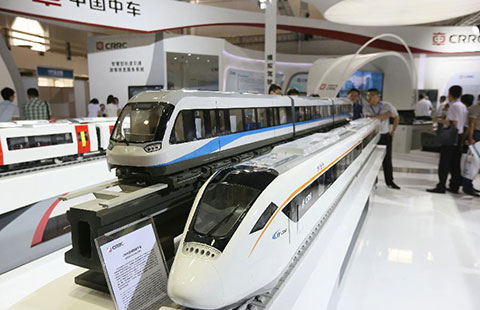China shores up investment to sustain growth
(Xinhua) Updated: 2015-06-19 10:28BEIJING - The Chinese government has moved to boost investment and counter downward pressure on economic growth, as export and domestic consumption seem weak.
The government will reform investment and financing, according to a statement released after an executive meeting of the State Council.
"This single move can have multiple effects, including stabilizing economic growth, restructuring the economy, improving people's quality of life, increasing public products and gathering momentum for the future ," the statement said.
The central government will invest more in the power grid in rural areas, build grain storage and sewage disposal facilities and relocate old urban industrial zones.
The government decided on a three-year action plan to renovate 18 million urban houses and 10.6 million rural houses.
Crucial move for meeting growth target
China lowered the growth target for this year to around 7 percent, down from 7.5 percent for the previous three years, but pressure for growth still exists as exports and consumption, two major driving forces of growth, remained weak.
In the first five months of this year, retail sales of consumer goods rose 10.4 percent year on year, as opposed to 12.1 percent for the same period last year.
External demand is also weak. Customs data showed that exports dropped 2.8 percent in May.
The government has focused the last two executive meetings on ensuring steady growth.
Su Jian, deputy head of the economics institute at Peking University, said it would be hard to meet the growth target this year if the government fails to take strong measures.
Ensuring sufficient funds
Since the beginning of this year, construction of major projects has been the key for boosting investment and sustaining growth. By the end of April, investment into railways rose 22.6 percent year on year, with 419 kilometers of new track put into operation. Water storage projects under construction saw investment soaring 42.2 percent.
However, in the first five months, funds for fixed-asset investment rose 6 percent, down from 6.5 percent for the first four months. Domestic loans dropped 6.3 percent in the first five months, continuing the trend since March.
- Outbound deals continue to gain momentum in first five months
- China's overseas investment surges 47.4% in January-May
- Investment spending to get big boost
- Think tanks to focus on sustainable development
- China's growth will benefit other countries
- China continues to have central place in world economy
- China's production capacity cooperation aims at win-win for all
- China tariff level to stay steady after WTO transitional period
- China, Russia boost investment, financial cooperation
- China banks' forex settlement sees surplus in May
- China's overseas research centers yield win-win results
- Dormitory gives boarding school students a new lease of life
- Draft law will tax sites producing excess waste
- Plastic ban taps green business

















